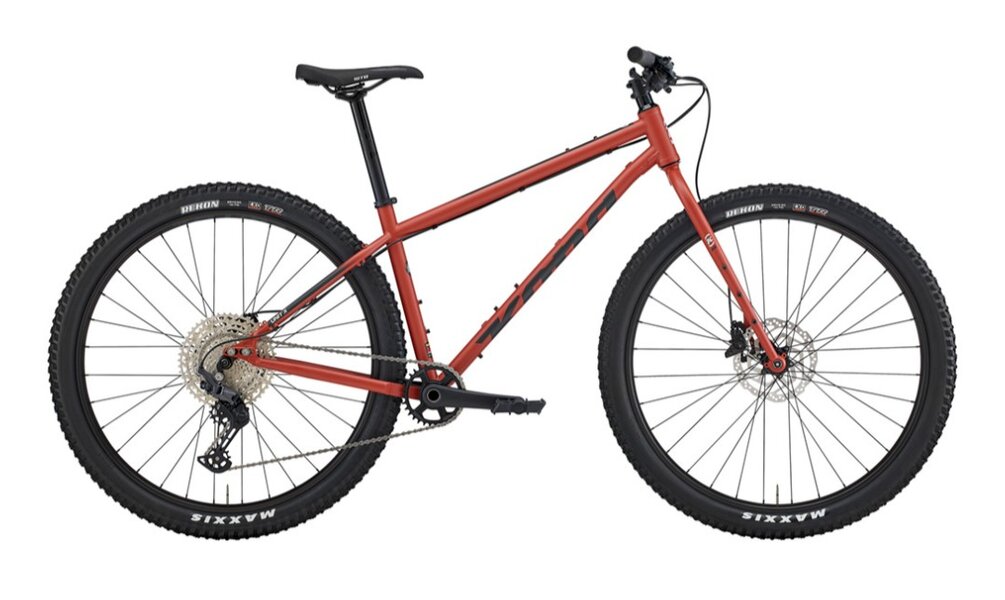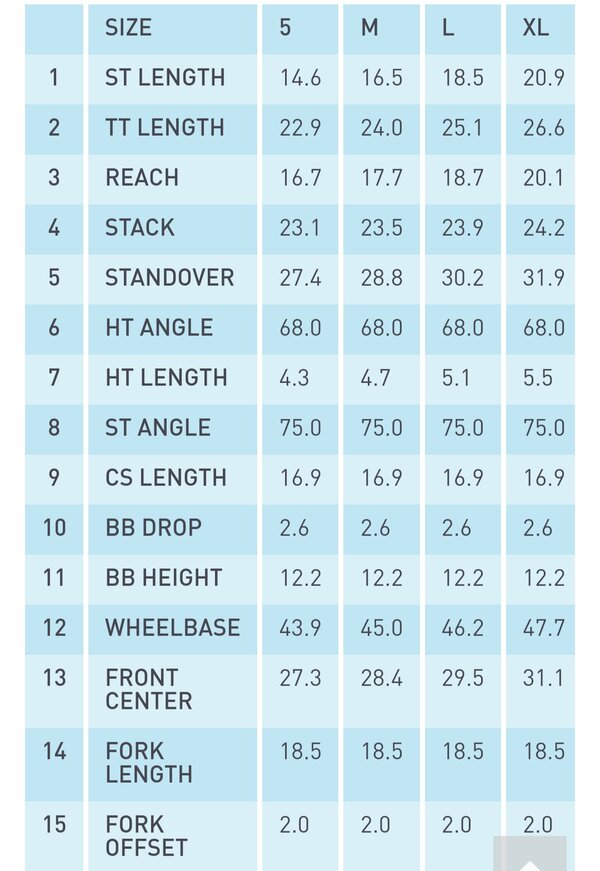You are using an out of date browser. It may not display this or other websites correctly.
You should upgrade or use an alternative browser.
You should upgrade or use an alternative browser.
The stirrings of radical geometry…
- Thread starter 2manyoranges
- Start date
2manyoranges
Senior Retro Guru
- Feedback
- View
FC - agreed….can’t compare modern competition XC machines, since they have gone all bouncy….
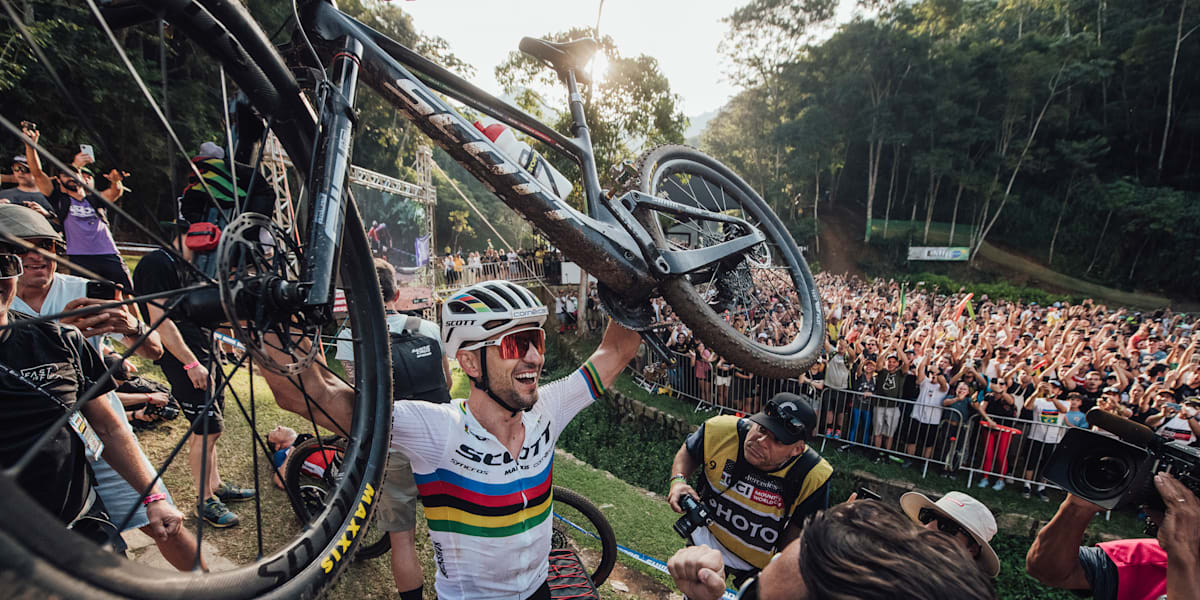
 www.redbull.com
www.redbull.com
But in terms of hardtails I have followed the evolution of a model such as the Santa Cruz Chameleon, which has crept through the angles over it’s long lifetime, so that now it has the 65 HA and 74 SA which I longed for in the late 90’s…..

The fastest cross-country bikes that the pros ride
These cross-country bikes have all taken riders to the top of the podium in 2022. Take a look at some of the fastest bikes on the UCI World Cup circuit.
But in terms of hardtails I have followed the evolution of a model such as the Santa Cruz Chameleon, which has crept through the angles over it’s long lifetime, so that now it has the 65 HA and 74 SA which I longed for in the late 90’s…..
- 120mm travel forks
| Frame Size | Small | Medium | Large | XL |
|---|---|---|---|---|
| Seat Tube (centre-top) | 15.35” | 16.7” | 18.1” | 19.5” |
| Top Tube Length (Effective) | 23.6” | 24.6” | 25.6” | 26.8” |
| Head Angle | 66.0° | 66.0° | 66.0° | 66.0° |
| Seat Angle | 75.0° | 75.0° | 75.0° | 75.0° |
| Chainstay Length | 17.5” | 17.5” | 17.5” | 17.5” |
| BB Drop | 2.35” | 2.35” | 2.35” | 2.35” |
| Head Tube Length | 3.9” | 4.3” | 4.7” | 5.1” |
| Reach | 17.3” | 18.1” | 19.1” | 20.2” |
| Stack | 23.6” | 24.0” | 24.4” | 24.7” |
| Wheelbase | 46.1” | 47.1” | 48.2” | 49.4” |
| Maximum Seatpost Insertion (including actuator mechanism) | 251mm | 286mm | 321mm | 356mm |
This is the chart for a Cotic Solaris with a 120mm fork so pretty standard trail 29er.
What stands out to me is not just the angle but the extra length. The small has the same ett as the 20” RM on the previous page!
Have to admit, I’m the opposite to LGF. I love feeling like I’m sitting in the bike and on older bikes I just feel like I’m teetering on top of them. Luckily there are loads of designs to pick from from different eras to suit.
I do feel like we are reaching peak slack though. Can’t see me ever needing a bike longer, lower or slacker than my current Transition Sentinel. My mate also just traded his Solaris (from the chart) to one of the new Chameleons as he felt it was just too long and slack.
2manyoranges
Senior Retro Guru
- Feedback
- View
Peak slack
Love it….great term
(…and we love our Transitions here … wow how those Sentinels climb … twiddle twiddle twiddle up up up …)
Love it….great term
(…and we love our Transitions here … wow how those Sentinels climb … twiddle twiddle twiddle up up up …)
Last edited:
- Feedback
- View
Thing is I want to know what it would be if you altered the old bike, 26 er an 40mm /390 rigid forks.
That's alters a bike , so geometry has to change to cater for the changes, 29ers wheelbase has to be longer to start with, the front end has to be higher, the forks longer so everything changes, with the front being higher, your stance is different so it all changes again.
You seem to know what the charges are, so what would a modern short travel 26er be from BiTD under new geometry.
So a stem shortens from 135 (standard/short back then).
To what 80mm, so we loose 2" or so, so TT can take that. Etc...?
That's alters a bike , so geometry has to change to cater for the changes, 29ers wheelbase has to be longer to start with, the front end has to be higher, the forks longer so everything changes, with the front being higher, your stance is different so it all changes again.
You seem to know what the charges are, so what would a modern short travel 26er be from BiTD under new geometry.
So a stem shortens from 135 (standard/short back then).
To what 80mm, so we loose 2" or so, so TT can take that. Etc...?
2manyoranges
Senior Retro Guru
- Feedback
- View
apologies missed the question in the earlier post and it's indeed a very good question.Thing is I want to know what it would be if you altered the old bike, 26 er an 40mm /390 rigid forks.
That's alters a bike , so geometry has to change to cater for the changes, 29ers wheelbase has to be longer to start with, the front end has to be higher, the forks longer so everything changes, with the front being higher, your stance is different so it all changes again.
You seem to know what the charges are, so what would a modern short travel 26er be from BiTD under new geometry.
So a stem shortens from 135 (standard/short back then).
To what 80mm, so we loose 2" or so, so TT can take that. Etc...?
I think back to what I was trying to do with the nickel Team Marin in the 90's. One of these in 15.5 inch.
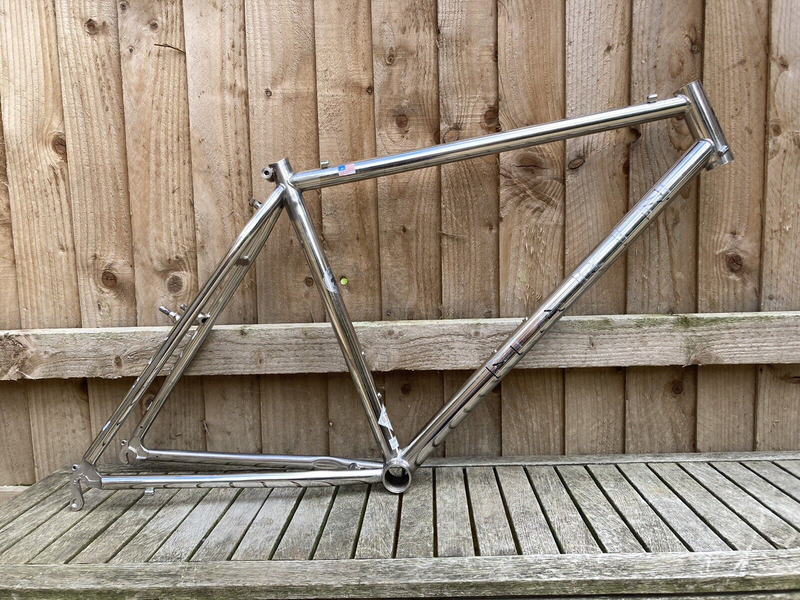
OK....what did I do and what did I think was optimum?
1 in line Syncros post, with Avocet ti saddle rammed forward on the rails. This made the effective seat angle a lot steeper. no loss of rear traction - nice wide Mavic CD rim with Ground Controls on it - min clearance at the chain stay but oodles of traction, and the steeper angle really helped with climbing...a lot. implication....the seat tube angle was already inspired by the ti Marin which Joe M designed with a steep 74 deg seat tube ... so I had a seat rammed forward on an already steep front end. ....and so I would go to 78 deg.
2 short stem combined with longer top tube....not 130 short which we thought indeed was 'short' - but I used 120 then 100 - I would have gone shorter if I could have found something I liked, and not some horrible road things. Then the TT was 59cm actual which was loooooong for the time - but let's take at least 20mm from the stem and add it to the tt making it a 61 effective or even 62cm.
3 OK...so actually I initially was using a low front end, arse in the air position which LGF refers to....I liked the front end higher but was limited by threaded steerer, so managed to find a weird short stem (100mm effective) which had a bonkers 50deg rise. Then upswept bars, raising the front end a lot. Actually looked like the setup which downhillers of the time were using. But didn't unweight the front wheel too badly, so no washout in turns - and got me looking at the trail rather than the front hub .. which kept on winking Hope Hope Hope as it went round. Quite appropriate.
4 then....head angle. Rigid forks, but 65 head angle, so would need a longer ac dimension to stop the front end from dropping. My current 29ers are low 60's without sag, steepening to 65ish actual when 30% sag is dialled in. So with a rigid, slightly longer fork on there I would push it and go to 66 or 65.
summary
78 deg seat tube
62 effective tt length
90mm stem with rise or substantially longer head tube
65 head angle
Thing is I want to know what it would be if you altered the old bike, 26 er an 40mm /390 rigid forks.
That's alters a bike , so geometry has to change to cater for the changes, 29ers wheelbase has to be longer to start with, the front end has to be higher, the forks longer so everything changes, with the front being higher, your stance is different so it all changes again.
You seem to know what the charges are, so what would a modern short travel 26er be from BiTD under new geometry.
So a stem shortens from 135 (standard/short back then).
To what 80mm, so we loose 2" or so, so TT can take that. Etc...?
I think @2manyoranges has gone a bit further than I would on some of his numbers. With rigid or very short travel fork, you’re not getting any head angle steepening to any degree as the fork goes through its travel. I’m running nearly as much sag as a 40mm fork has travel. Head angle changes by 0.5° for every 10mm travel, so 40mm travel it will only alter 2° max and for very short periods. I think 67-68 would be more reasonable.
My hardtail had 130mm forks and so changes head angle up to a maximum of 6.5°, so it needs a slacker starting angle.
Seat tube angle needs to be steeper on full suss as it reduces under sag. Hardtail 76° max would be enough.
80mm stem is huge these days, I’ve nothing over 50mm and some as short as 35mm. Less slack bikes can get away with a bit longer, so I’d say 50mm.
Agree with longer head tube, IMO a better option than more rise on the stem.
Definitely need more length in the bike both in the front centre and chainstay length.
Lots of stand over and short seat tube to allow for 200mm dropper post.
Can’t give exact dimensions and I’m not even convinced those changes would work. Bike handling doesn’t hang on one or even two numbers, it’s a blend of everything. You need slacker head angle to compensate for increased travel. Steeper seat angles to help weight the front of longer bikes. I don’t think a 40mm travel 26” bike would have to evolve so far.
Not going to paste the whole thing but here’s the link to the Chameleon archive with geometry if all the versions.
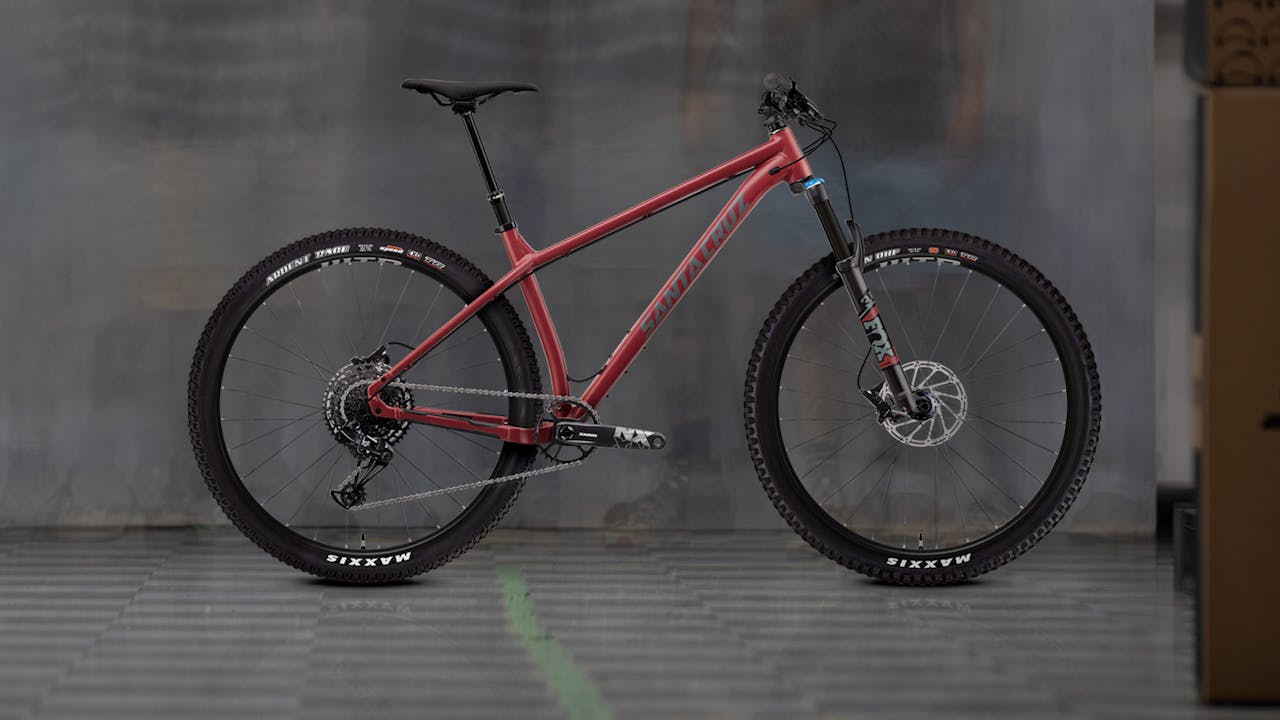
Santa Cruz Bicycles | Chameleon - Product Support
Product support and bicycle archive pages for the Santa Cruz Bicycles Chameleon
2manyoranges
Senior Retro Guru
- Feedback
- View
oooh ... I forgot seat tube length ... you're right ... go to 12-13 inches for the seat tube.I think @2manyoranges has gone a bit further than I would on some of his numbers. With rigid or very short travel fork, you’re not getting any head angle steepening to any degree as the fork goes through its travel. I’m running nearly as much sag as a 40mm fork has travel. Head angle changes by 0.5° for every 10mm travel, so 40mm travel it will only alter 2° max and for very short periods. I think 67-68 would be more reasonable.
My hardtail had 130mm forks and so changes head angle up to a maximum of 6.5°, so it needs a slacker starting angle.
Seat tube angle needs to be steeper on full suss as it reduces under sag. Hardtail 76° max would be enough.
80mm stem is huge these days, I’ve nothing over 50mm and some as short as 35mm. Less slack bikes can get away with a bit longer, so I’d say 50mm.
Agree with longer head tube, IMO a better option than more rise on the stem.
Definitely need more length in the bike both in the front centre and chainstay length.
Lots of stand over and short seat tube to allow for 200mm dropper post.
Can’t give exact dimensions and I’m not even convinced those changes would work. Bike handling doesn’t hang on one or even two numbers, it’s a blend of everything. You need slacker head angle to compensate for increased travel. Steeper seat angles to help weight the front of longer bikes. I don’t think a 40mm travel 26” bike would have to evolve so far.
Not going to paste the whole thing but here’s the link to the Chameleon archive with geometry if all the versions.

Santa Cruz Bicycles | Chameleon - Product Support
Product support and bicycle archive pages for the Santa Cruz Bicycles Chameleonwww.santacruzbicycles.com
Re head angle....hmmmmm.....I went for what a sagged 30% sagged 160 would be on my 27.5 mmmmbop .... which I really like. And 26 plus tyres are not that different to 27.5 normal ... and I think on a rigid 26 er I would be running wide rims (35 internal) with plus tyres, which would be rolling diameter the same or more than a 27.5 normal. I will stick with my 65deg or maybe compromise to 66deg ... grief that means I then have to account for the clearances for 26 plus tyres, so out bend the chain stays and out goes the fork crown....
Please do, everyone’s tuppence welcome.Like a good geo thread. I was going to contribute with pre-80s Road / MTB stuff,
No right or wrong here, just different opinions.
I'm out of my league and will sit back and try to learn something.
No from me you won’t, pretty sure I’m talking an almighty load of pish.
Similar threads
- Replies
- 29
- Views
- 2K
- Replies
- 7
- Views
- 1K
